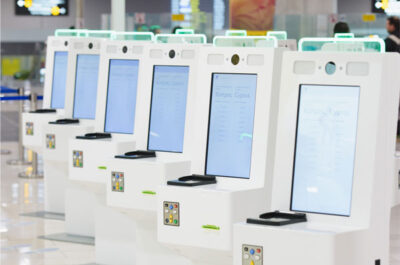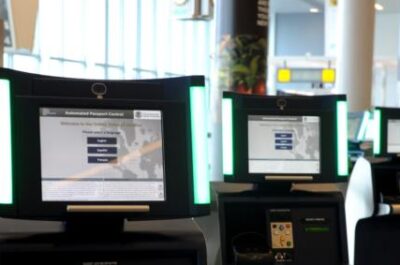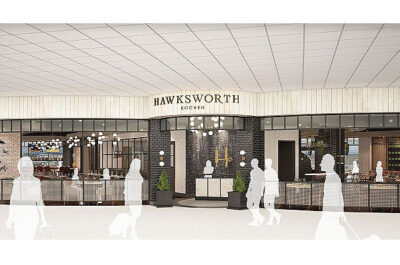A discussion with Craig Richmond, President and CEO of Vancouver Airport Authority, who talks about the BorderXpress Automated Passport Control (APC) kiosks of Vancouver Airport and the benefits of them.
TravelDailyNews: How much more accurate is the APC kiosk system compared to human observation?
Craig Richmond: Automated Passport Control (APC) systems offer a quick, easy and secure alternative to the traditional full clearance with a U.S. Customs and Border Protection officer at the inspection line. Instead of filling out a declaration card and waiting to take their travel documents to a CBP officer, passengers who are eligible and choose to use APC can proceed directly to a self-service kiosk in the U.S. CBP inspection facility.
Travelers will follow the on-screen instructions to scan their U.S. or Canadian passport/Visa waiver, answer the customs declaration questions using the touch screen, receive a receipt confirming their information and proceed to the CBP officer for a final review.
Vancouver Airport Authority (YVR) also recently announced an upgrade to its BorderXpress APC kiosks with the latest biometric technology from Cross Match Technologies to enable international travelers with Electronic System for Travel Authorization (ESTA) approval to use BorderXpress. Previously only available to U.S. and Canadian passport holders, BorderXpress now accepts eligible travelers from 38 countries which do not require US entry visas, including Australia, Japan, Germany and the United Kingdom.
The new biometric kiosks offer many benefits to ensure that ESTA-approved travelers can quickly get through the border clearance process, including:
- Seamlessly integrated fingerprinting technology makes the kiosks user-friendly
- Industry-leading scanner technology reads fingerprints from many angles, while being able to detect fingerprints regardless of wetness or dryness of the finger – often an issue with earlier generation technology
- Intuitive and easy-to-use for English and non-English speaking passengers alike: Simple language prompts a user through all necessary steps by indicating finger sequence, placement and pressure, while correcting typical mistakes
TDN: What is the cost of installation? Are the airports willing to pay it?
C.R.: The cost of the YVR BorderXpress kiosks is commercially sensitive information that we unfortunately cannot disclose.
However, we know that customers –which include both airports and airlines- are rapidly adopting BorderXpress for its advantages in reducing wait times, terminal congestion, missed connections and airport processing costs. Moreover, it is the only turnkey, fully-hosted solution available, successfully implemented at more airports than any other offering. In fact – YVR is able to turn around an order in two weeks – from signing the contract to installed and fully operational.
Currently, BorderXpress kiosks are available at ten terminals across nine major international airports in North America – more than any other provider. These airports include:
- Vancouver (YVR)
- Charlotte Douglas (CLT)
- Chicago Midway (MDW)
- Chicago O’Hare (ORD)
- Fort Lauderdale-Hollywood (FLL)
- Hartsfield-Jackson Atlanta International Airport (ATL)
- Montreal-Trudeau (YUL)
- New York’s John F. Kennedy T1 and T4(JFK)
- Seattle-Tacoma (SEA)
TDN: Is there any cost reduction involved and from where?
C.R.: Yes, by streamlining the customs entry process the YVR BorderXpress kiosks help reduce airport processing costs.
TDN: How much quicker is the procedure and why?
C.R.: The YVR BorderXpress kiosks simplify the customs entry process for both airport personnel and travelers by automating the administrative functions of the inspection process, delivering the following benefits:
· 89 percent faster than typical Customs and Border Protection primary inspection process
· 4 times more passengers processed per CBP Officer
· 50 percent less time spent waiting in line for all travelers (Automated Passport Control and non-Automated Passport Control users)
JFK Terminal 4 recently reported an average decline in wait time from 36 minutes to 17. In the first 40 days of operation, Chicago O’Hare’s kiosk users took only four minutes to proceed through customs on average, while non-kiosk users spent 38 minutes.
TDN: Many of our readers are in the European travel industry – can you comment on plans for expansion of this technology into airports in Europe?
C.R.: While we cannot pre-announce any future sales, we are excited about the interest we have received both in North America and worldwide for developing self-service border solutions that are quick, safe and secure, and available to all travelers at no cost. We will be sure to keep you apprised as we partner with additional airports.
Theodore is the Co-Founder and Managing Editor of TravelDailyNews Media Network; his responsibilities include business development and planning for TravelDailyNews long-term opportunities.





























































































































































































































